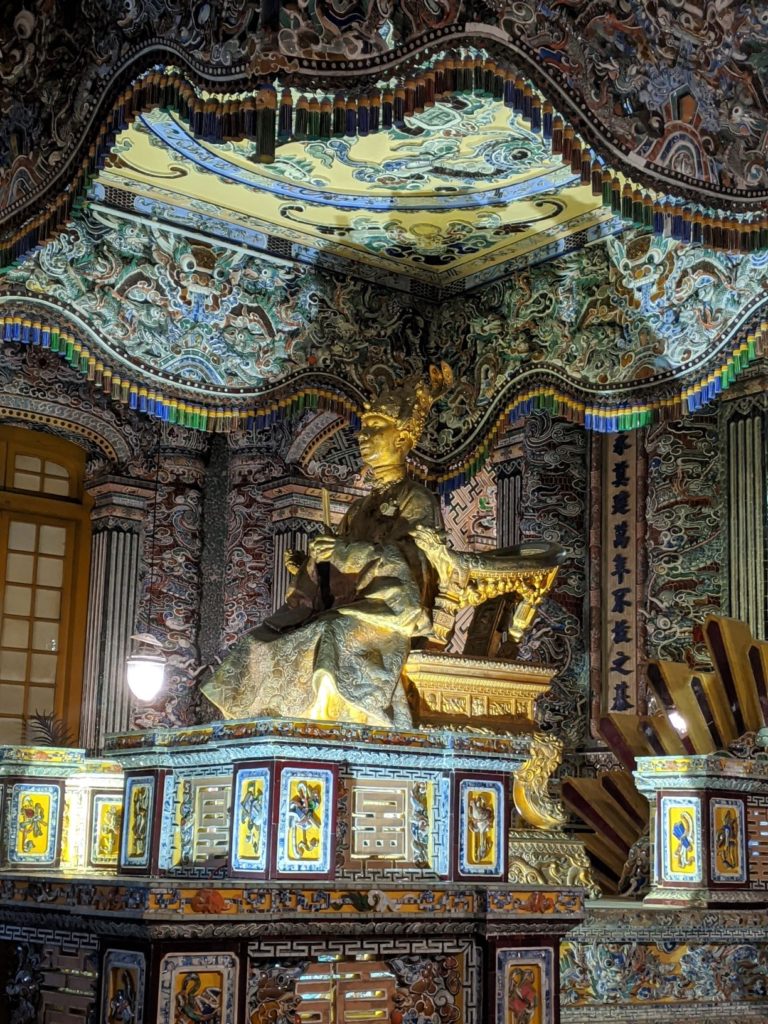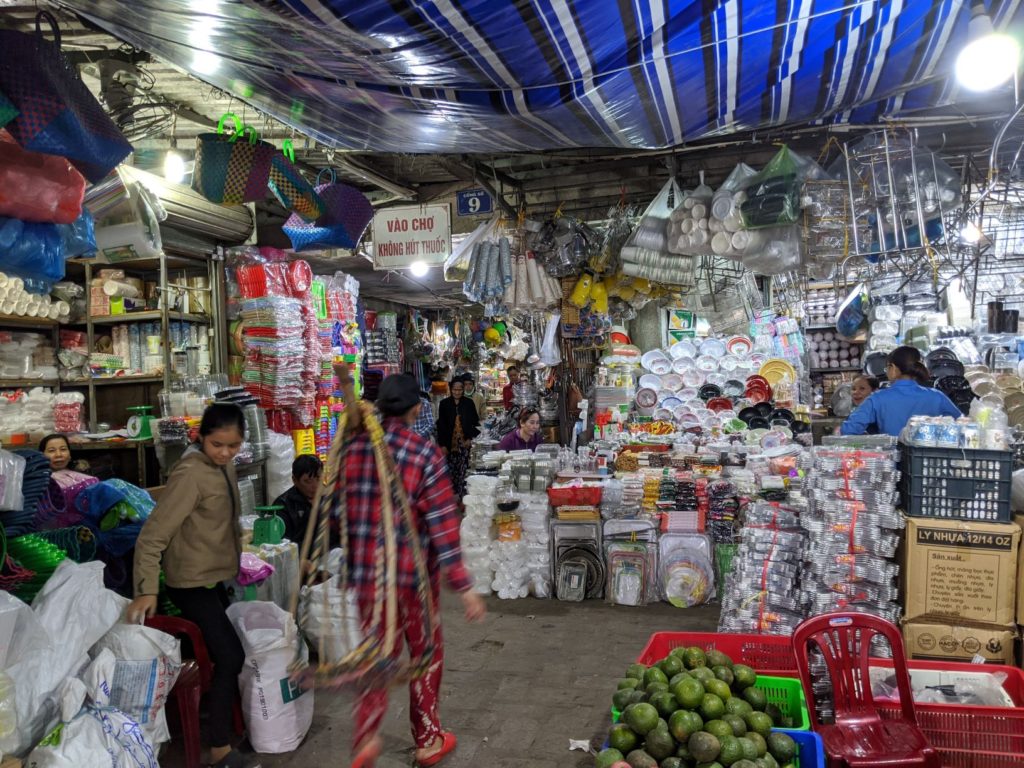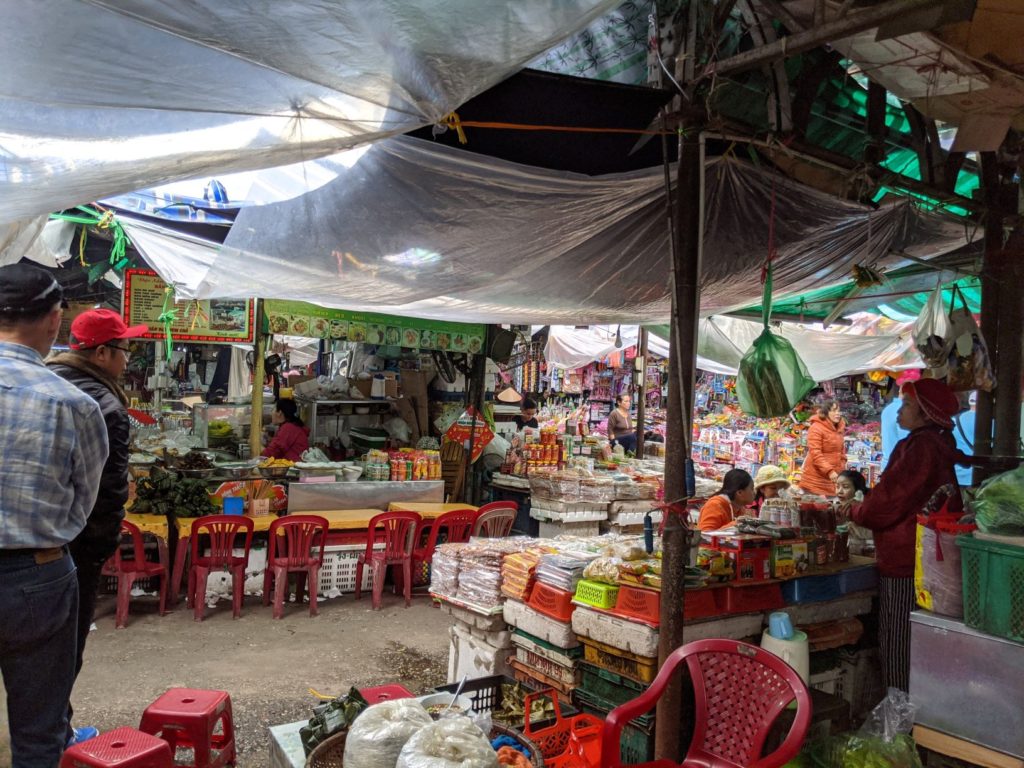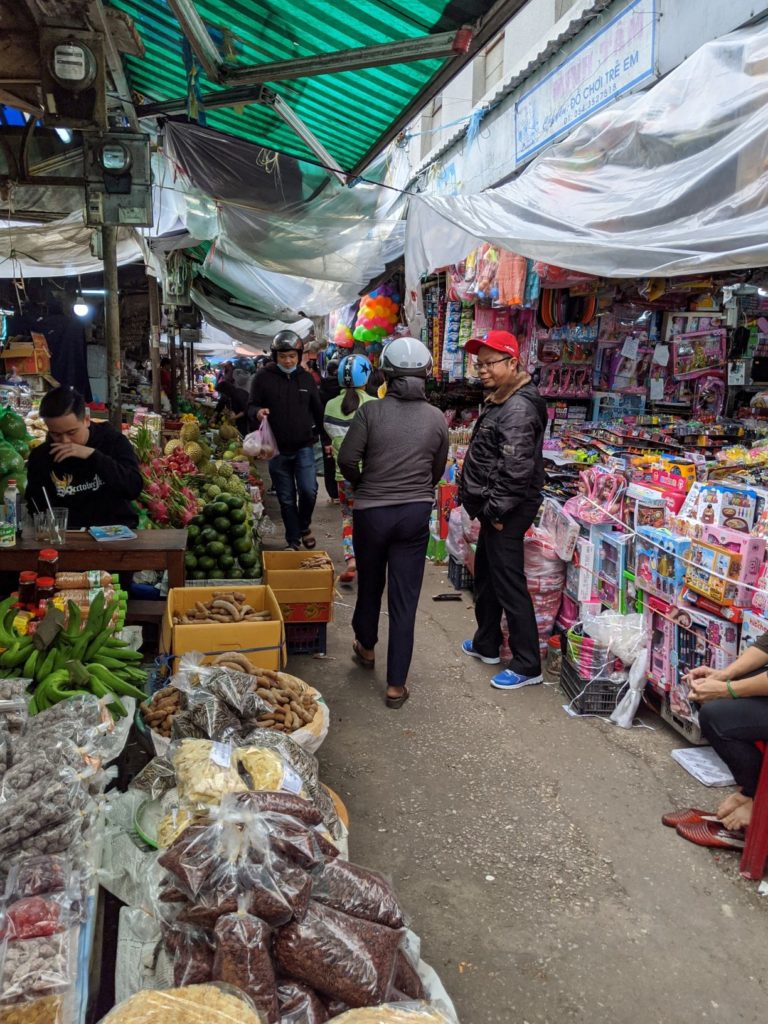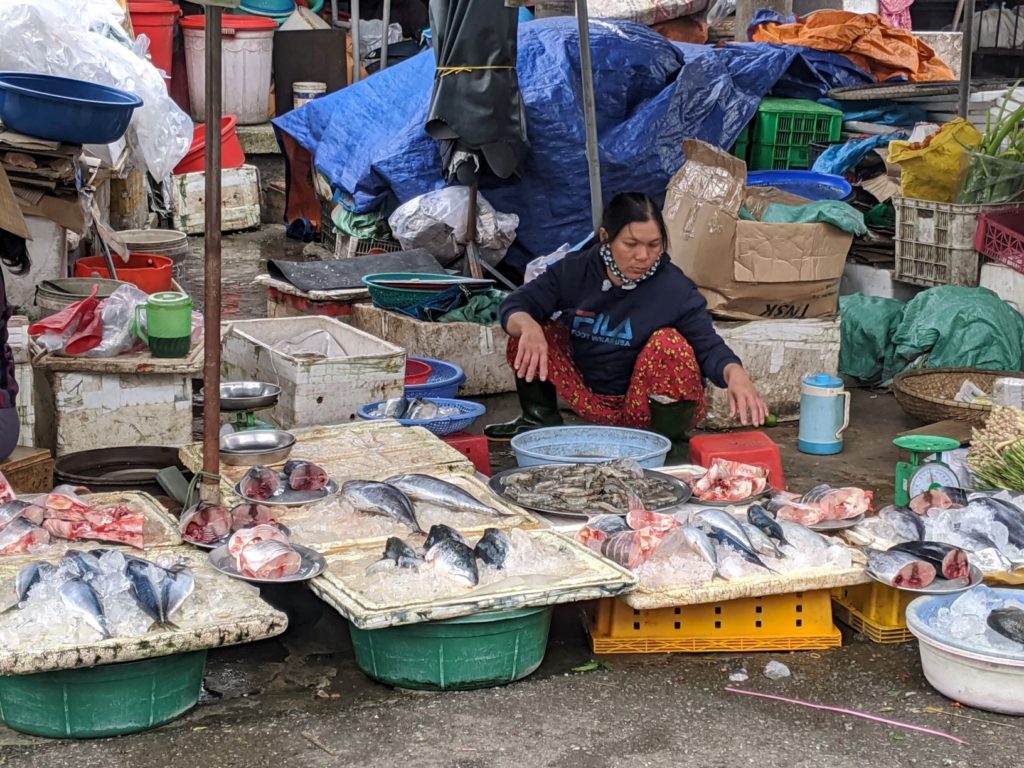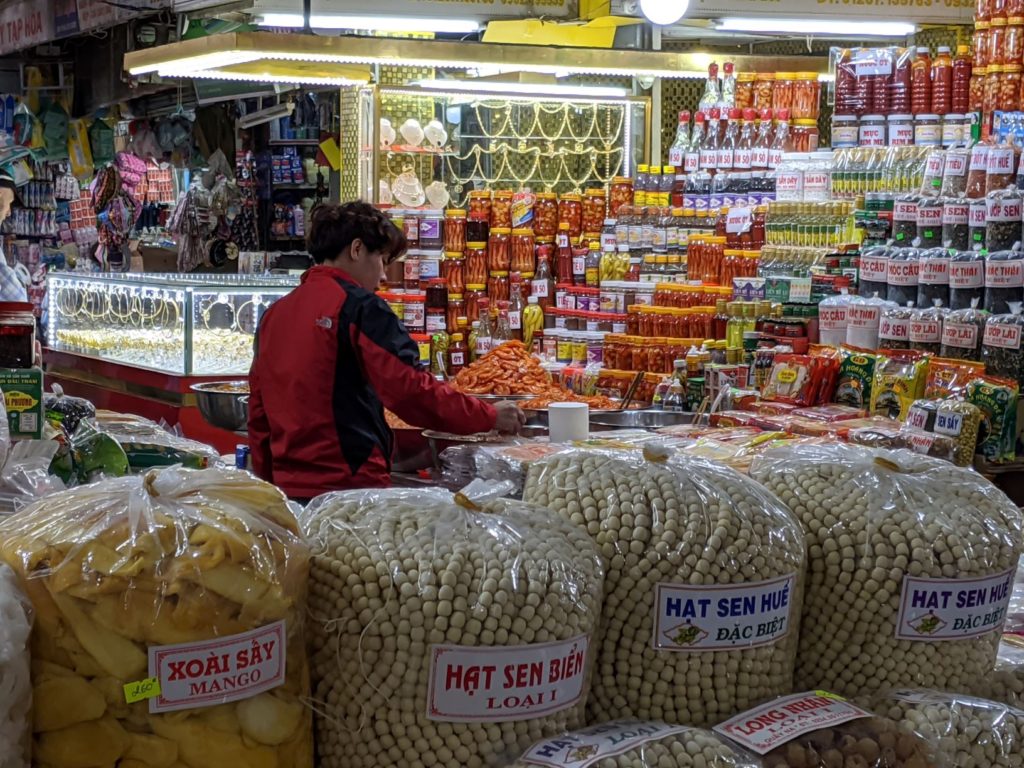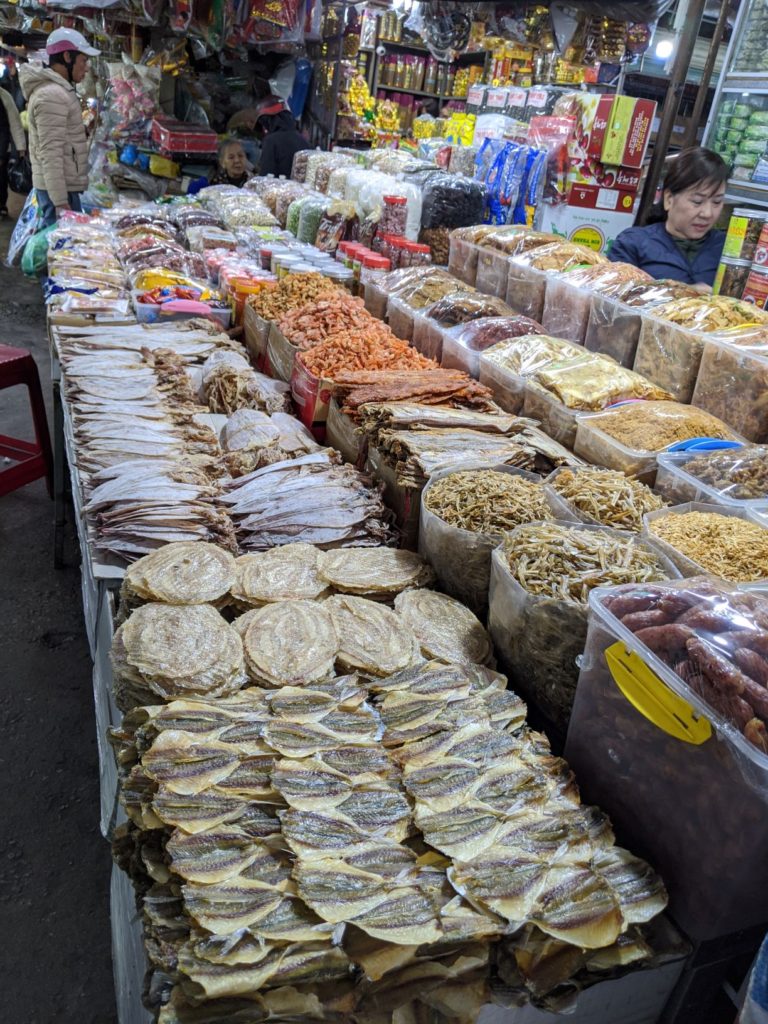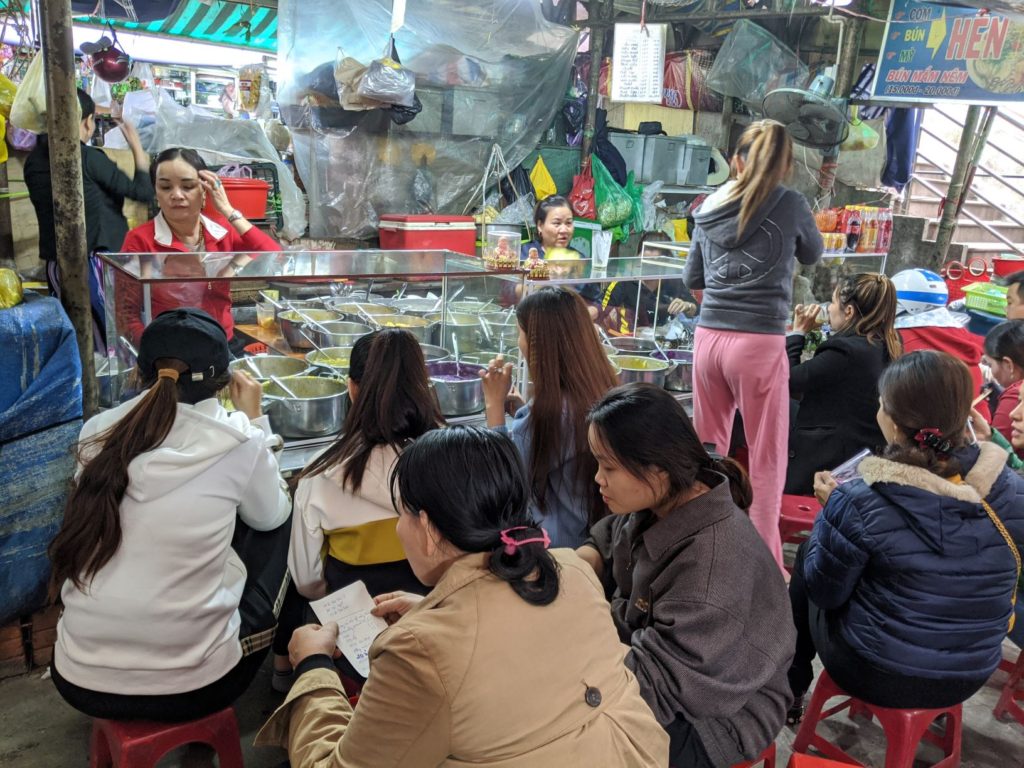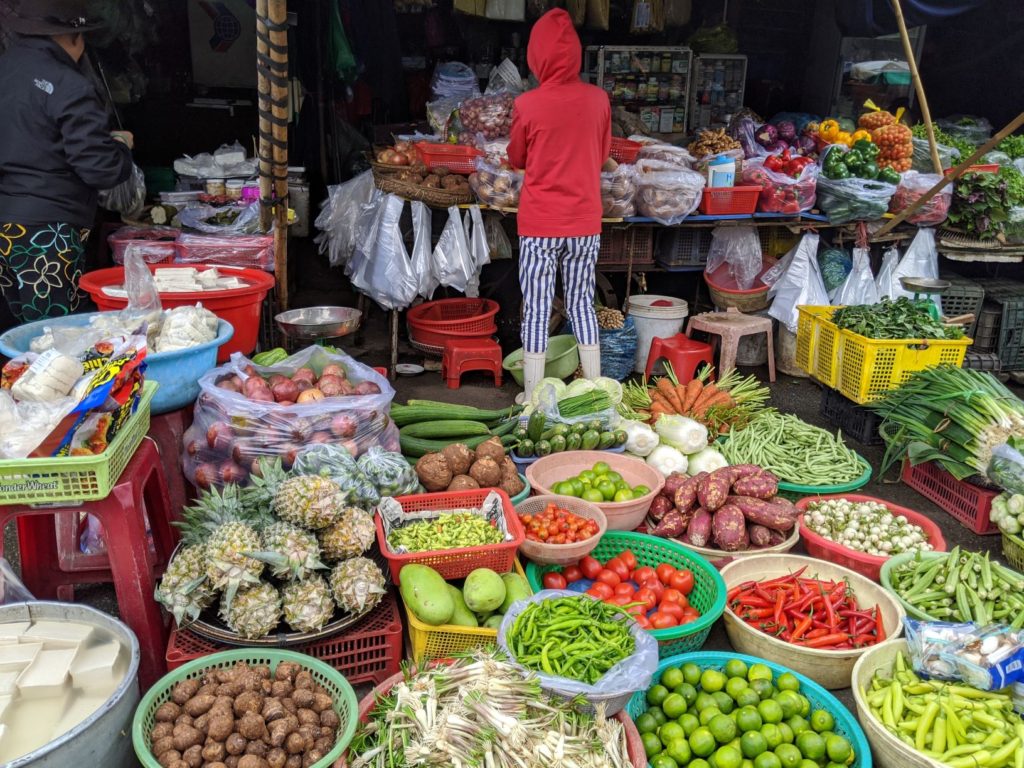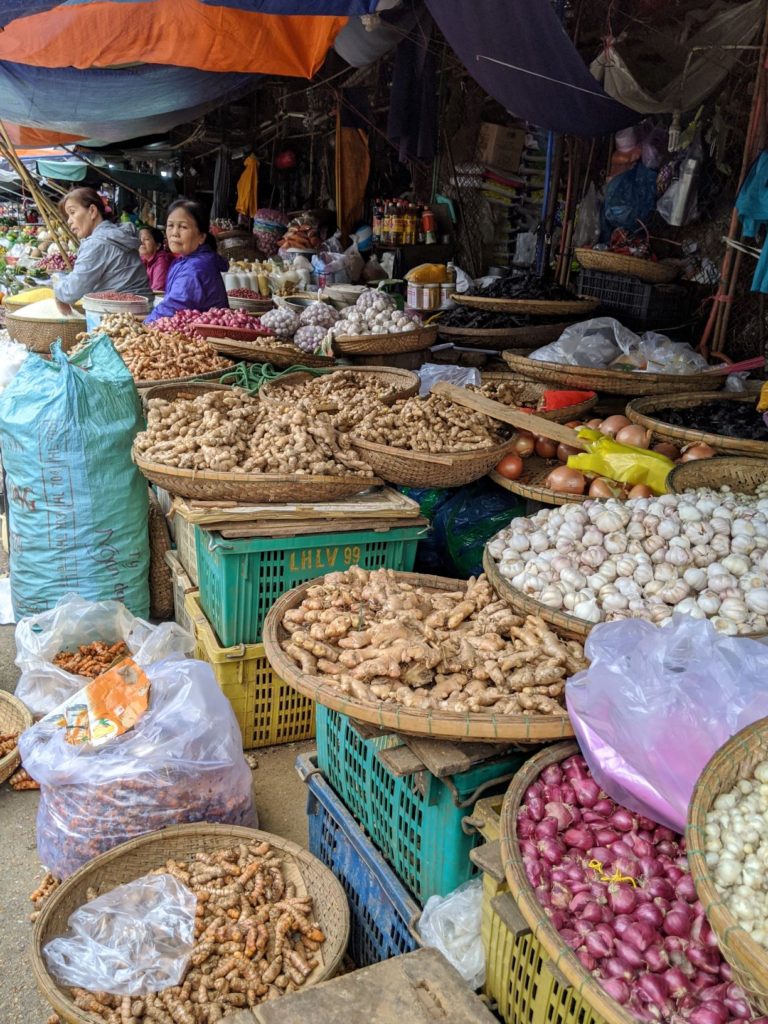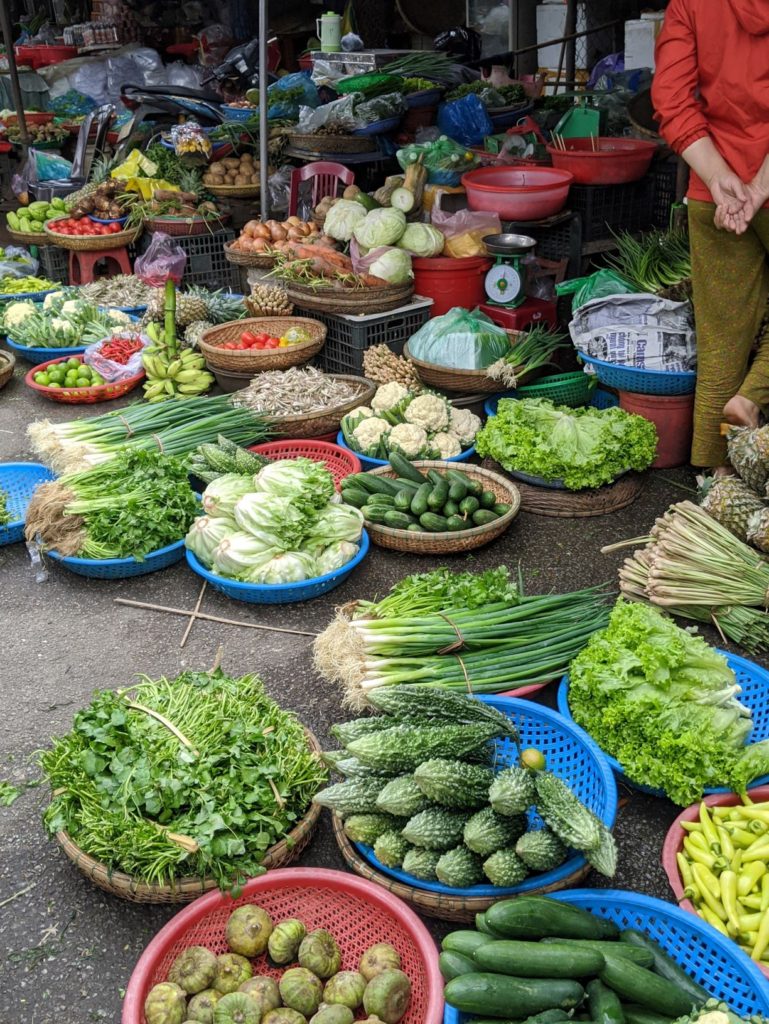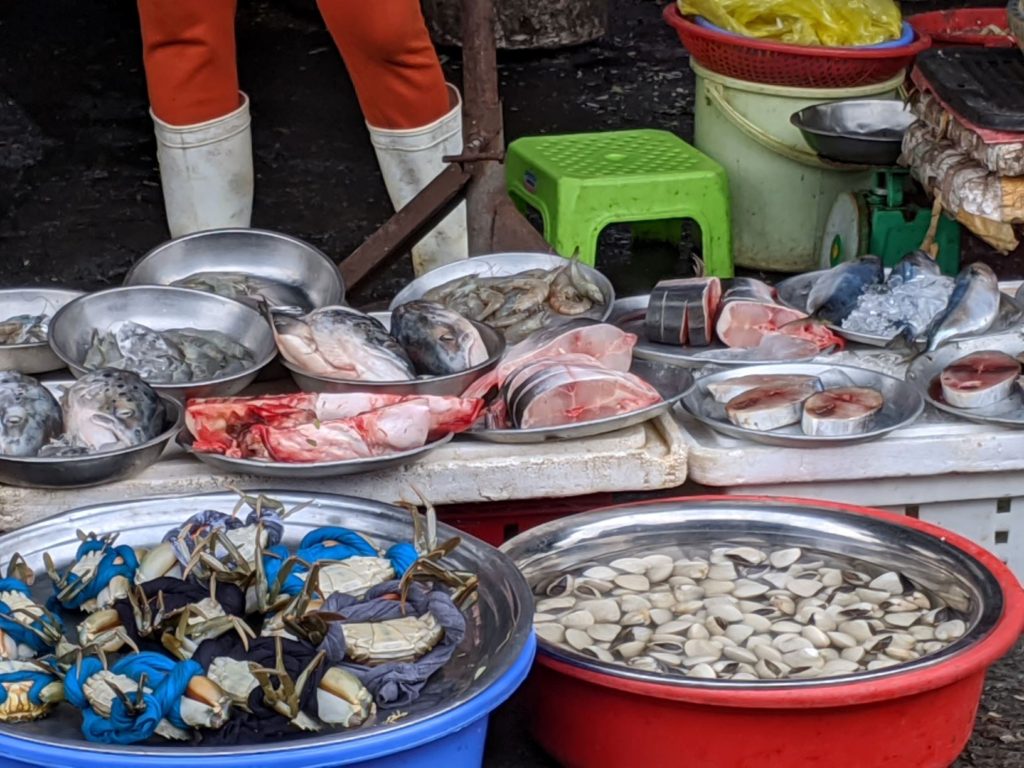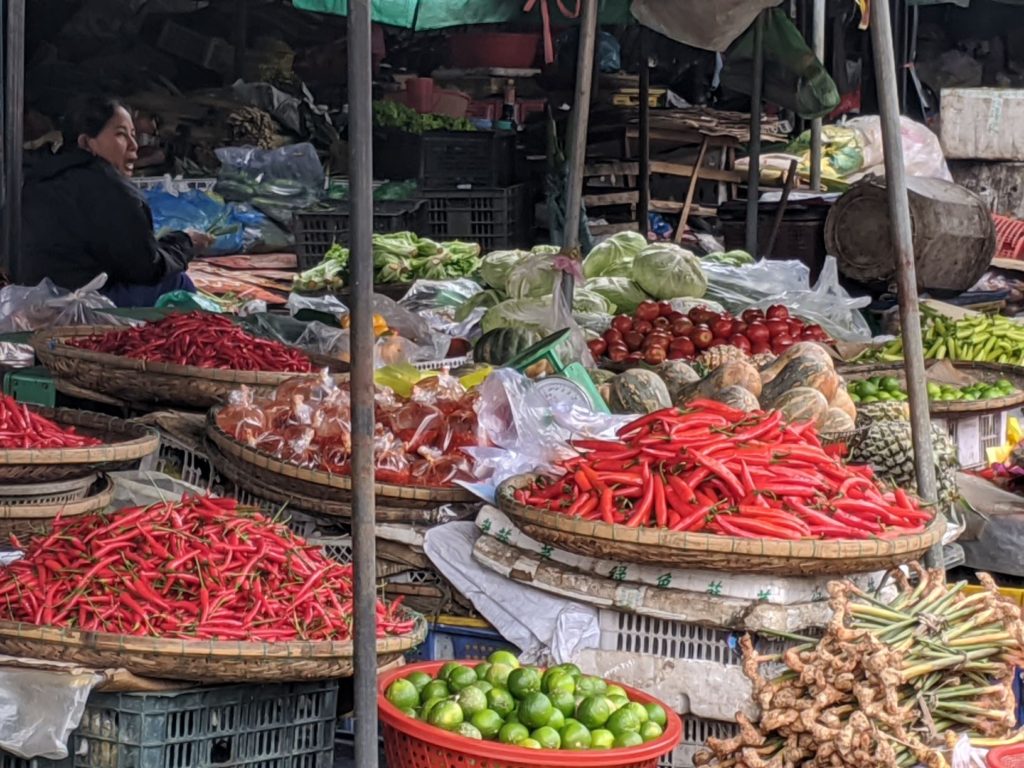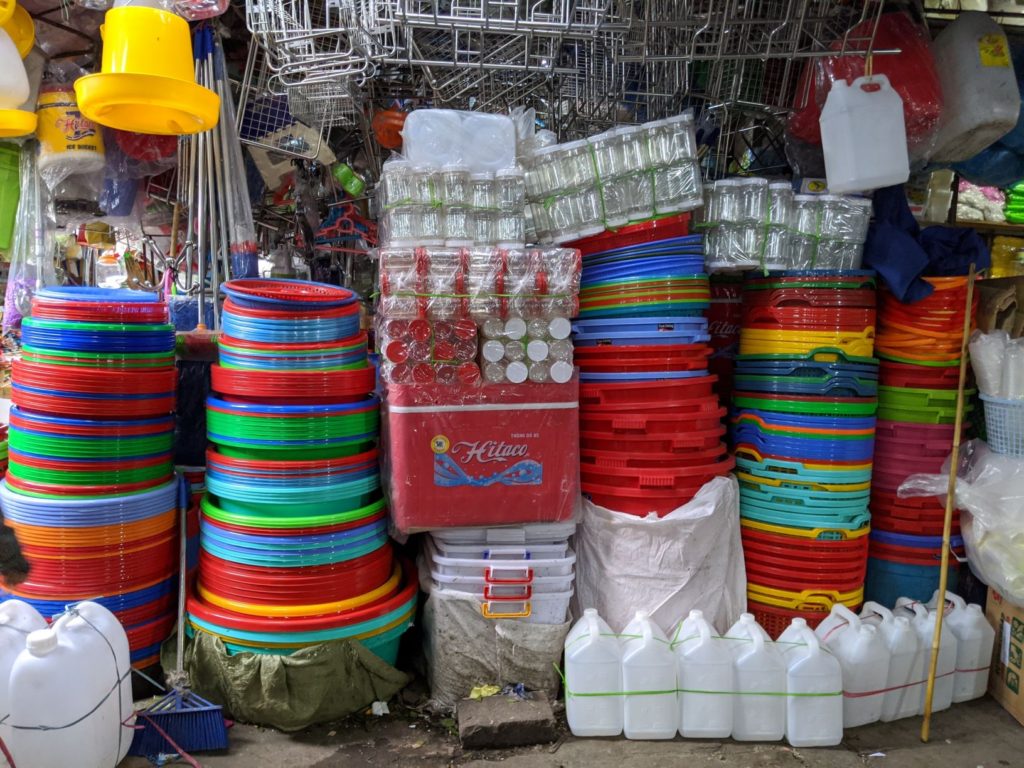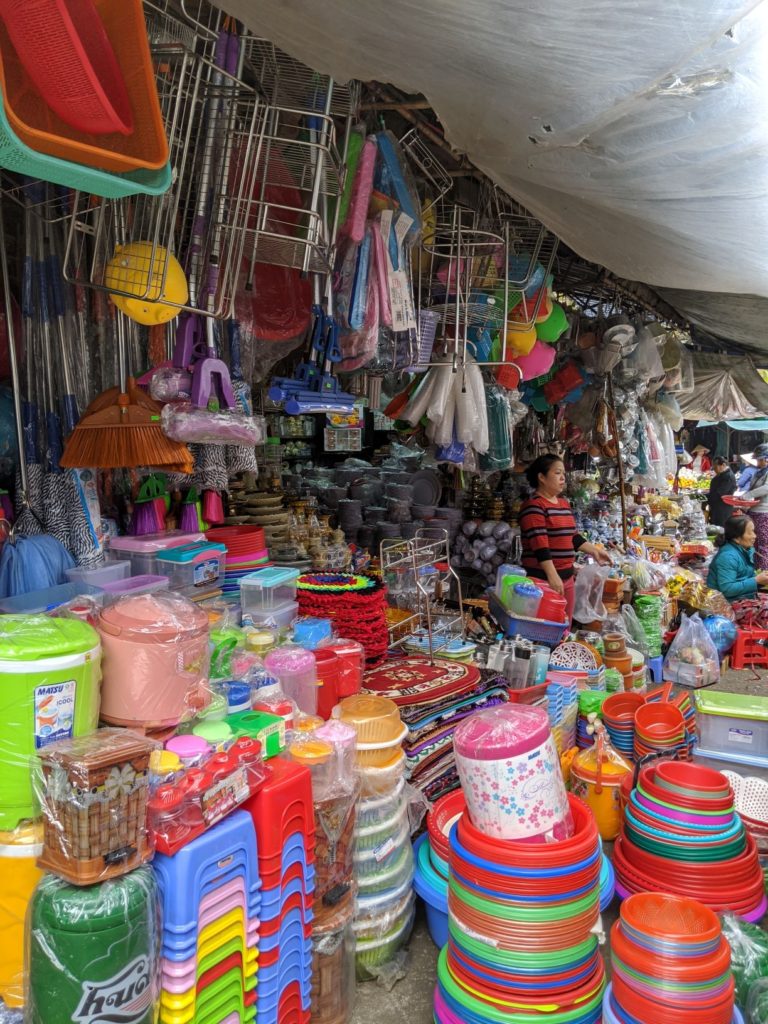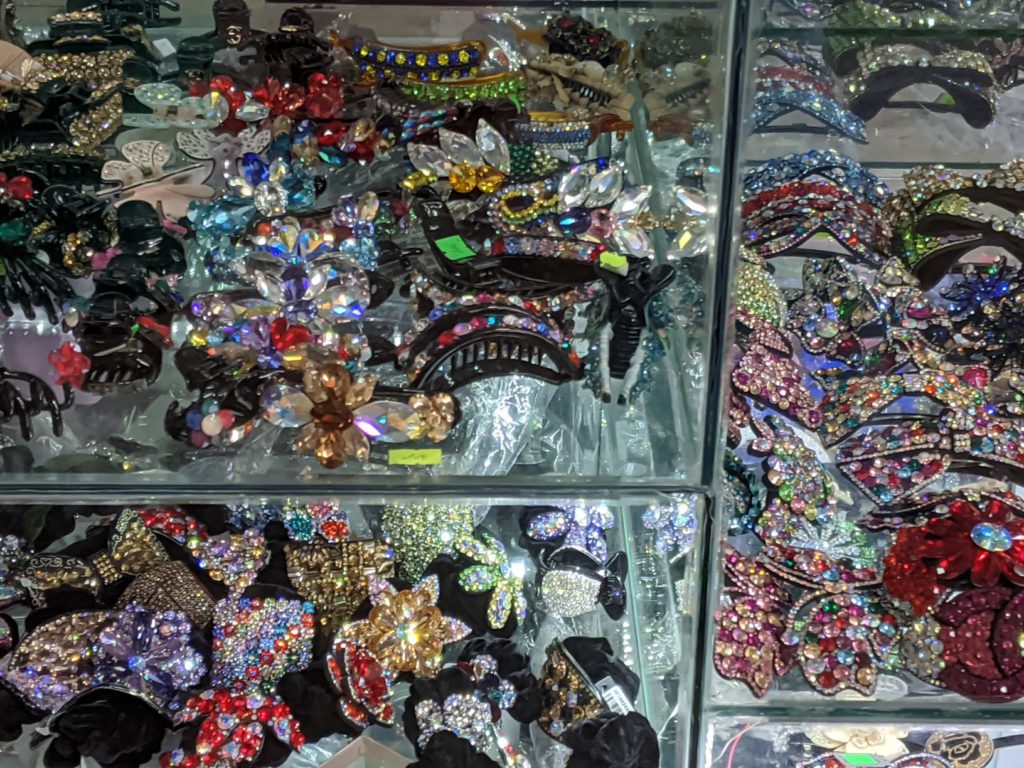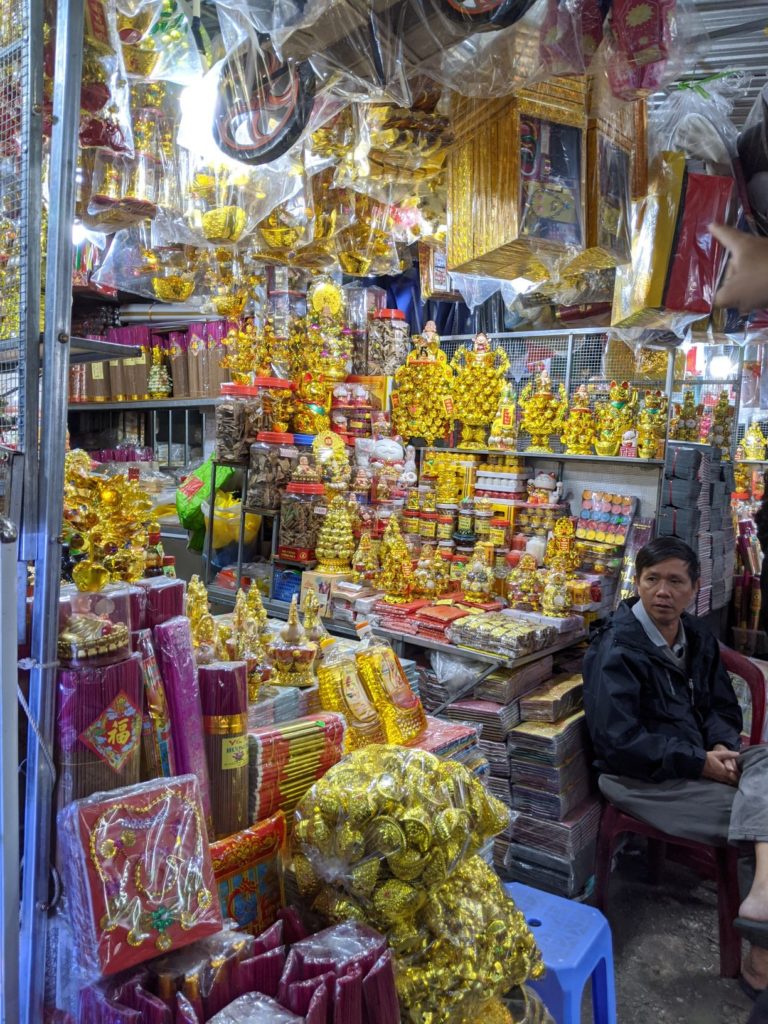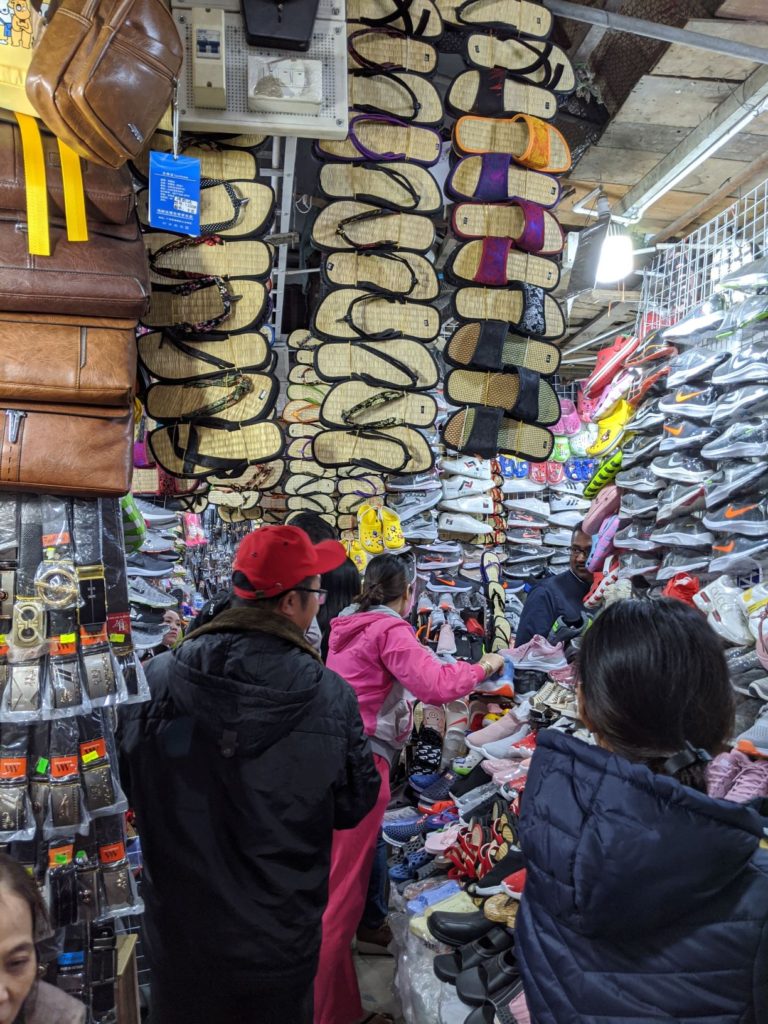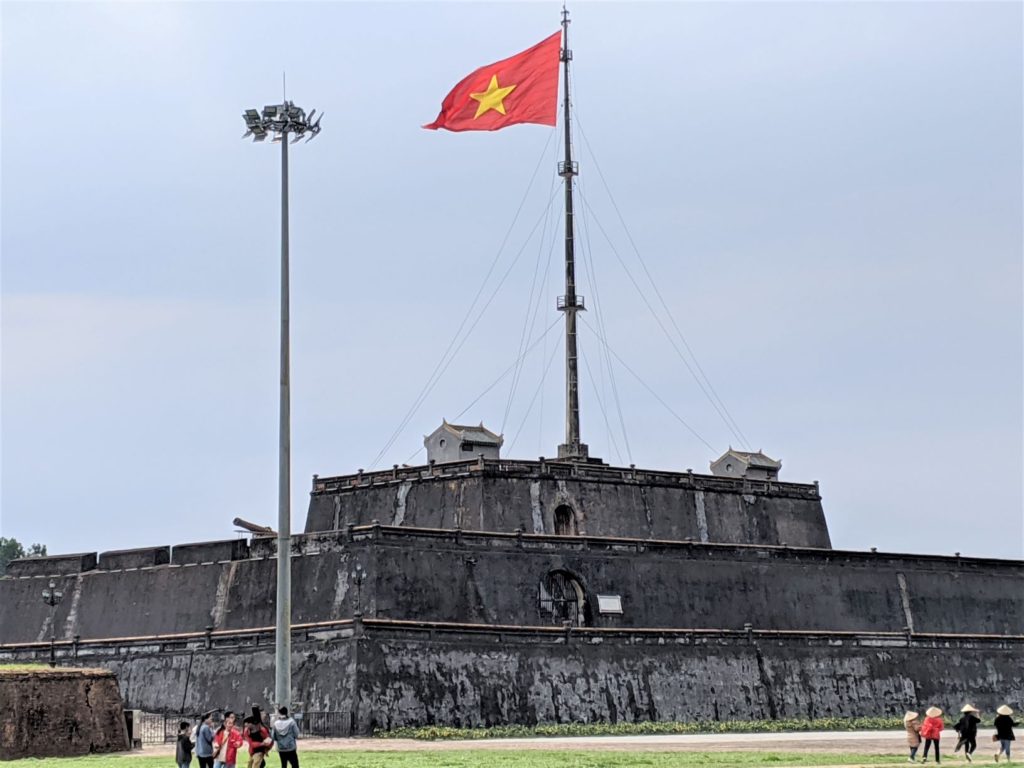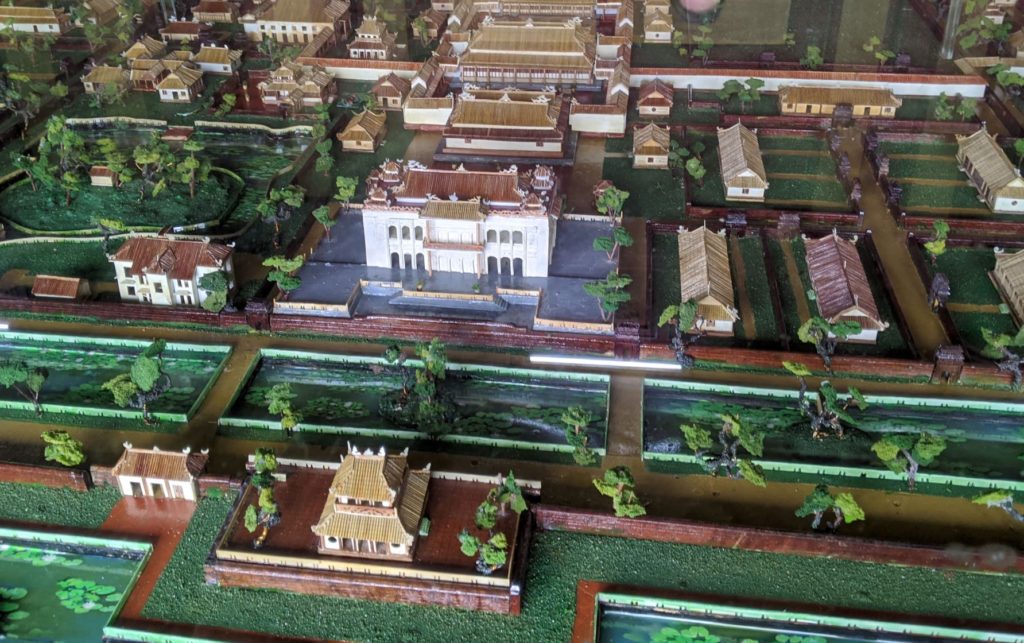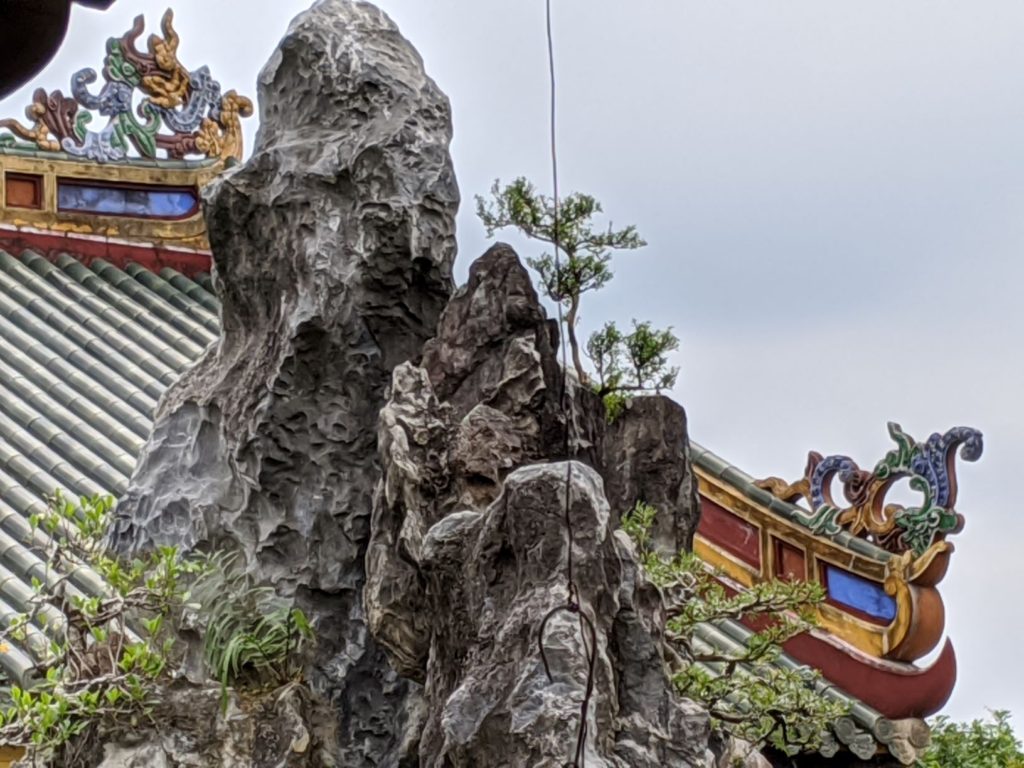Khai Dinh was the twelfth emperor of the Nguyen dynasty in Vietnam, reigning from 1916 until his death at age forty in 1925. He was selected by the French who then controlled Indochina to become emperor after the death of his father’s two successors. Both of these were independent-minded, and the French believed Khai Dinh would be the easiest member of the royal family to control. Indeed, it is generally understood that he was a puppet figurehead of the French. He took the name Khai Dinh upon ascending to the throne. It means “auger of peace and stability.”
In 1920, Khai Dinh began construction of his own tomb–something of a tradition among Viet rulers. It took eleven years to complete, finally finished by Khai Dinh’s son Bao Dai in 1931. The high taxes Khai Dinh imposed upon his people in order to build his tomb greatly increased his unpopularity with his people.

The tomb is built on several levels on a steep hillside, with each space building up to the lavishly decorated tomb itself on the top level.





Inside, every surface is ornamented. Columns and walls are decorated with porcelain mosaics in both Oriental and French motifs. The ceiling is painted with dragons.








The tomb itself, surmounted with a likeness of the emperor, is dramatic and impressive.
